"Which
brush should I use on my dog?"
If you gently tug a sample tuft of your dog's fur between your thumb and
index finger and examine the fur strands in your hand, what do they look
like? If they are all the same length and are short and straight in appearance,
then your dog has what's called a short haired or flat coat, meaning it
has only a top coat which can be kept free of loose, shedding hair with
a rubber brush such as a "zoom groom" commonly found in pet
stores. If you also notice fine, whispy or crinkley strands, then your
dog also has an undercoat that can be managed with a specialized undercoat
brush such as a Furminator. Before you buy a brush for your dog, it's
important to identify what kind of coat your dog has.
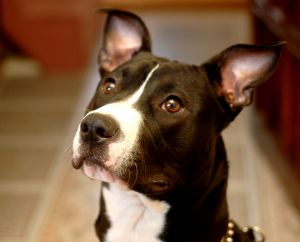 Top
Coat--Zoom Groom
Top
Coat--Zoom Groom
Dogs like pitbulls and labs have a short outer coat that is best managed
with a rubber brush. My favorite is called a zoom groom, and it works
by basically pulling out loose fur as it is rubbed over your dog's coat.
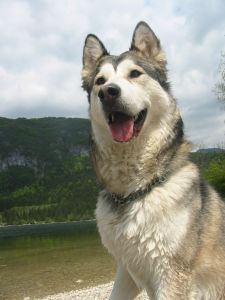 Under
coat--Furminator
Under
coat--Furminator
The undercoat is comprised of silky strands that are designed to keep
your dog warm. A top coat typically covers the undercoat, so the undercoat
can go unnoticed and ungroomed in some breeds with short fur like labs
and golden retrievers. Zoom groom brushes succeed in removing *some* of
the loose undercoat, but it is not designed to penetrate the top coat
to reach the undercoat so if your dog also has an undercoat, shedding
may continue. Traditionally, groomers "card" these types of
dogs by modifying a grooming blade into a specialized undercoat brush.
We do this by removing the moving part (the sharp part) of a #40 blade
and raking the teeth of the modified blade over the coat to penetrate
the top coat and remove undercoat. The problem is, unless you are trained
to use the blade properly, you can easily irritate your pet's skin as
well as cause great strain to your hand. A brush called the furminator
is essentially the same thing as a carding blade but it's larger (to cover
more hair) and it has a handle. You still need to keep a close eye on
your pet's skin as you brush though. If it becomes red, stop immediately.
Also, this brush is not designed to work only on loose hair. If you continue
to brush an area, you can literally remove all the undercoat and end up
with a balled spot (and irritated skin). But if you are careful to watch
the skin and coat as you brush, this tool will prove to be invaluable
for eliminating shedding.
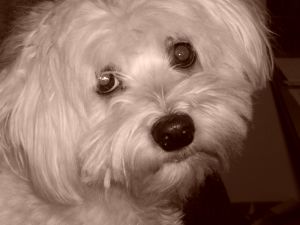 Drop
Coat--Slicker Brush & Comb
Drop
Coat--Slicker Brush & Comb
If you have a shihtzu, maltese, lahsa apso, yorkshire terrier, or any
dog with long flowing hair that is similar to straight, human hair, all
you need is a slicker brush and a comb to remove knots. The comb should
glide through the fur without getting stuck.
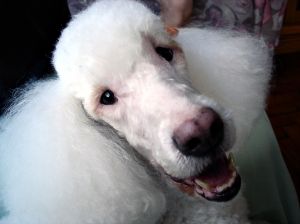 Curly
Coats--Comb & Slicker Brush
Curly
Coats--Comb & Slicker Brush
Dogs like poodles and bichons look their best when their fur is "fluffed"
with a comb regularly. Slicker brushes are useful for removing knots,
but like with drop coated breeds, a comb should glide through the coat
without resistance.
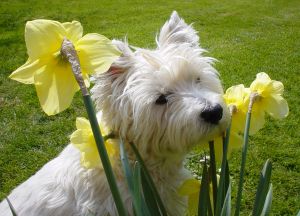 Wire
Coat--Slicker Brush or Pin Brush
Wire
Coat--Slicker Brush or Pin Brush
Most terriers and dogs with wiry hair benefit most from a slicker brush.
Most dogs don't mind the slicker brush, but if your pet doesn't like the
slicker brush or seems to flinch as you use it, your dog may be trying
to tell you it has sensitive skin. If this happens, try switching to a
pin brush instead as it is not capable of scratching the skin.